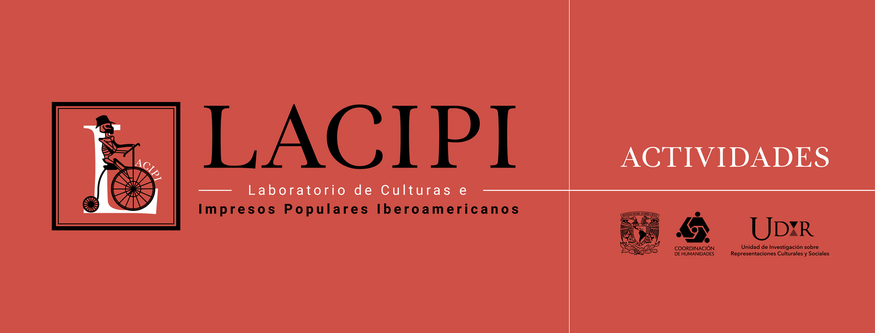< Inicio
Ibero-American popular prints, mainly from the 19th and early 20th centuries, are the subject of our investigation. The popular character of this material is rooted, among others, in the fact that they were widely distributed. Due to the way they circulated, often hanging from a twine or string, they were also called “cordel literature”. Their origin stems back to the very birth of the printing press, and like other cultural objects, they traveled across various media, creating a complex international cultural circuit along the centuries.
-
Popular prints are multimedia objects, since they involve both image and text; their content was read or sung aloud in order to be sold. Given its versatility and multifunctionality, this material involves multiple reading practices, as pointed out by Jean François Botrel:
"It is a fact that the cordel genre is immersed in two worlds: the world of written and printed culture, which refers to the book and the image, and the world of oral popular culture, with a place in the bookshop, the memory, and the repertoire of the people. Without going as far as stating a rule, it is easily observable, even retrospectively, that there is, within or regarding a work of cordel print, a convergence of various modes of realisation and/or use, such as recitation, reading, seeing, listening, staging, cutting, pasting and even swallowing, with as many possible combinations. This depends on the need or expectation and of the modes of production and commercialisation which characterise and situate them in a set of printed materials and/or memorised texts and practices." (Jean François Botrel, “El género de cordel” en Luis G. Díaz Viana (coord.) Palabras para el pueblo. Aproximación general a la Literatura de Cordel, vol. 1, Madrid: CSIC, 2000, p. 44)
Popular prints stand between the oral and the written modes, both in the origin of its contents as in its oralised distribution processes. -
These complex relationships between oral and written tradition define them as hybrid products. According to Luis Díaz Viana:
"The world of the transmission of “cordel literature”, sustained by the oral and the printed, the recited and the sung, literature and music, traditional and popular, vulgar and cultivated, print and voice, is a realm as real as elusive, the territory of mixture, the country of impurities." (“La imprenta y la voz. Difusión de pliegos de cordel madrileños de los siglos XIX y XX” en Luis G. Díaz Viana (coord.) Palabras para el pueblo, Vol.II. La colección de pliegos del CSIC: Fondos de la Imprenta Hernando. Madrid: CSIC, 2001, p. 24)

We wish to thank the Universidad Nacional Autónoma de México and the Proyectos de Apoyo Para la Investigación y la Innovación Tecnológica (PAPIIT) which have allowed us to create this repository:
- Materialidades de la voz: archivos, impresos y sonido (IG400519)
- Los impresos populares mexicanos de la Nueva España al México independiente (1800 -1917): rescate y edición crítica (IN402617)
- Impresos Populares Mexicanos (1880-1917). Rescate documental y edición crítica (IG400413)
We also acknowledge the trust received by the Consejo Nacional de Ciencia y Tecnología (CONACyT) for the project “Impresos populares mexicanos (1880 - 1917): rescate documental y edición crítica” (239530-H). The help provided allowed us to continue with this project.
We also appreciate the enthusiastic support and collaboration of the Ibero-American Institute of Berlin at different stages of the project.
| |

|

|

|

|

|
| Collections | Formats | Printing presses | Topics | Texts |
|
|









